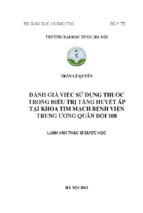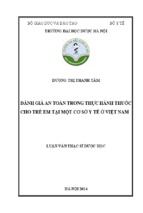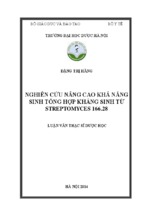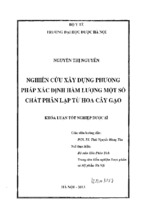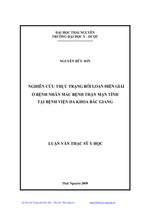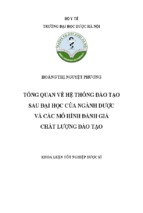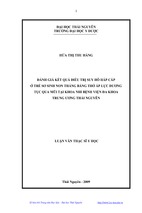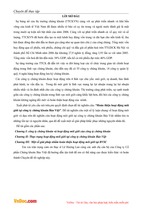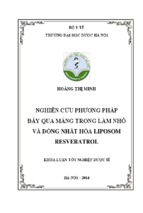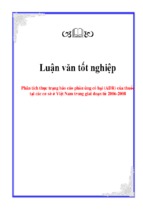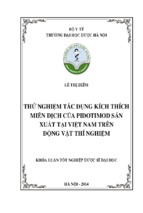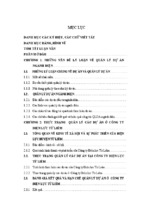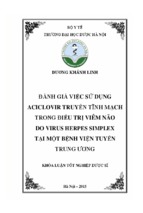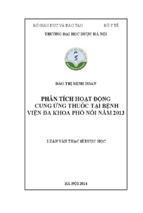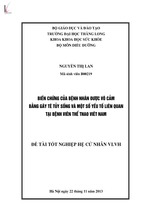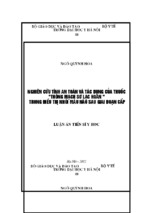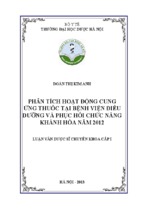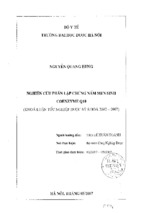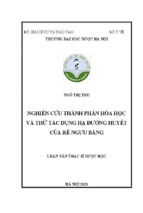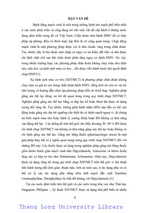FAIR VALUE IN THE CASE OF VIETNAM
BY
LE MAI TRANG
Graduation Project Submitted to the Department of Business Studies,
HELP University College, in Partial Fulfilment of the Requirements for
the Degree of Bachelor of Business (Accounting) Hons
OCTOBER 2011
i
DECLARATION OF ORIGINALITY AND
WORD COUNT
I hereby declare that the graduation project is based on my original work except for
quotations and citations which have been duly acknowledged. I also declare that it
has not been previously or concurrently submitted for any other course/degree at
Help University College or other institutions. The word count is 10,723 words.
______________________
LE MAI TRANG
17 October, 2011
ii
ACKNOWLEDGEMENT
This project would not have been made possible without the assistance, support and
encouragement of many people. I wish to take this opportunity to thank all the people
who have helped me during the time of completing the dissertation.
Firstly, I would like to express my deep gratitude to my supervisor Dr. Pham Duc
Hieu, International School, Vietnam National University Hanoi. He has kindly
helped me and supported me all the way through. For that, I am very grateful.
I also would like to extend my special thanks to managers, accountants, my friends,
and other people who have help me to carry out the survey. I want to thank them for
all their support, interest and valuable hints.
iii
FAIR VALUE IN THE CASE OF VIETNAM
By
LE MAI TRANG
October 2011
Supervisor: Dr. Pham Duc Hieu
ABSTRACT
The recent financial crisis has led to various arguments for and against fair-value
accounting. These arguments focus on the possibility of applying this accounting
method, at the same time challenge the accounting setters to extend the application of
FVA in other areas. The financial crisis is the first, and also the biggest, challenge for
fair-value accounting ; it also lays the foundation for experimental research on fairaccounting in the coming years, helping researchers and accountants better their
understanding on the pros and cons of this method. This paper studies fair-value
accounting and investigates the application of fair value in Vietnam companies, from
which brings the appropriateness of accounting valuation between Vietnam and
international to narrow the gap in the integration process.
iv
TABLE OF CONTENTS
DECLARATION OF ORIGINALITY AND WORD COUNT ............................... i
ACKNOWLEDGEMENT ......................................................................................... iii
ABSTRACT ................................................................................................................ iv
TABLE OF CONTENTS ............................................................................................ v
LIST OF FINGURES & CHARTS ........................................................................ viii
LIST OF ABBREVIATIONS ................................................................................... ix
CHAPTER 1: INTRODUCTION .............................................................................. 1
1.1.
Background .................................................................................................. 2
1.2.
Problem statement ...................................................................................... 3
1.3.
Structure of Study ...................................................................................... 4
CHAPTER 2: LITERATURE REVIEW .................................................................. 6
2.1
Definition and conceptualization of Fair value ...................................... 6
2.2
Fair value vs. historical cost ...................................................................... 6
2.2.1
Argument for and against HC ................................................................. 6
2.2.1.1
Argument for HC ...................................................................................... 6
2.2.1.2
Argument against HC ............................................................................... 6
2.2.2
The argument for and against FVA ........................................................ 6
2.2.2.1
Argument for FVA.................................................................................... 6
2.2.2.2
Arguments against FVA ........................................................................... 6
2.3
Method to determine the FV .................................................................... 6
2.3.1
Valuation premise ..................................................................................... 6
2.3.2
Fair Value Hierarchy................................................................................ 6
2.3.3
Valuation Techniques ............................................................................... 6
2.4
Practical application of FV in the world ................................................. 6
v
2.4.1
FVA in the USA......................................................................................... 6
2.4.2
Application of fair value as required in the international accounting
standards. .................................................................................................................... 6
2.5
The formation and development of FVA in Vietnam ............................ 6
2.5.1
History form .............................................................................................. 6
2.5.2
In common standard - model theory ....................................................... 6
2.5.3
Comparison between IAS and VAS on FVA .......................................... 6
2.1.
Definition and conceptualization of Fair value ..................................... 7
2.2.1.
Argument for and against HC ................................................................. 9
2.2.1.1.
Argument for HC ...................................................................................... 9
2.2.1.2.
Argument against HC ............................................................................. 10
2.2.2.
The argument for and against FVA ...................................................... 11
2.2.2.1.
Argument for FVA.................................................................................. 11
2.2.2.2.
Arguments against FVA ......................................................................... 13
2.3.
Method to determine the FV .................................................................. 15
2.3.1.
Valuation premise ................................................................................... 15
2.3.2.
Fair Value Hierarchy.............................................................................. 15
2.3.3.
Valuation Techniques ............................................................................. 17
2.4.
Practical application of FV in the world ............................................... 18
2.4.1.
FVA in the USA....................................................................................... 18
2.4.2.
Application of fair value as required in the international accounting
standards 20
2.5.
The formation and development of FVA in Vietnam .......................... 22
2.5.1.
History form ............................................................................................ 22
2.5.2.1.
In common standard - model theory ..................................................... 24
vi
2.5.3.
Comparison between IAS and VAS on FVA ........................................ 26
CHAPTER 3: RESEARCH METHODOLOGY ................................................... 28
3.1.
Research objective .................................................................................. 29
3.2.
Research Methodology........................................................................... 29
3.3.
Data source ............................................................................................. 29
3.3.1.
Secondary data ........................................................................................ 29
3.3.2.
Primary data ........................................................................................... 30
3.4.
Research method .................................................................................... 30
3.5.
Research tool........................................................................................... 31
3.6.
Data collection ........................................................................................ 31
3.7.
Limitations .............................................................................................. 31
4.1.
Finding from accountants’ survey questionnaires ............................... 34
4.1.1.
Description of Respondents’ information ............................................. 34
4.1.2.
Description and Analysis of respondents’ understanding about FV
concept
35
4.1.3.
Description and Analysis of respondents about FV recognition ........ 36
4.2.
Findings from managers & accountants interview .............................. 39
4.2.1.
Disadvantages and challenge of FV in VN ........................................... 39
4.2.2.
Future of FV in Vietnam ........................................................................ 40
CHAPTER 5: CONCLUSION ................................................................................. 42
REFERENCES .......................................................................................................... 44
APPENDICES: QUESTIONNAIRE ....................................................................... 49
vii
LIST OF FINGURES & CHARTS
Figure 2.1 List of standards require the use of fair value ................................. 22
Figure 2.2 The comparison between IAS and VAS on FVA ........................... 26
Figure 4.1 Accountant category ........................................................................ 34
Chart 4.1 Description of Result – Question 1 ................................................... 35
Chart 4.2 Description of Result – Question 2 ................................................... 36
Chart 4.3 Description of Result – Question 3 ................................................... 36
Chart 4.4 Description of Result – Question 4 ................................................... 37
Chart 4.5 Description of Result – Question 5 ................................................... 38
Chart 4.6 Description of Result – Question 6 ................................................... 38
viii
LIST OF ABBREVIATIONS
GAAP
Generally Accepted Accounting Principles
FASB
Financial Accounting Standards Board
IASB
International Accounting Standards Board
IAS
International Accounting Standard
VAS
Vietnam Accounting Standard
IFRS
International Financial Reporting Standards
SFAS
Statement of Financial Accounting Standards
SEC
Securities and Exchange Commission
NASDAQ
National Association of Securities Dealers Automated
Quotations
FVA
Fair Value Accounting
FV
Fair Value
HCA
Historical Cost Accounting
HC
Historical Cost
ix
CHAPTER 1: INTRODUCTION
1.1 Background
1.2 Problem statement
1.3 Structure of study
1
1.1. Background
Historical cost accounting (HCA) is a system where liabilities and assets are
presented and recorded at the monetary amount paid or the consideration given at the
time of their acquisition. According to Generally Accepted Accounting Principles
(GAAP), assets and liabilities have been recording through this system. People are
common working with HCA because this is so conventional method. However, it
bears some strong flaws in context of the current business environment, which have
made accounting bodies, especially IASB & FASB, to search for a number of other
accounting methods. One of these alternatives is fair (market) value accounting that
has been thinking as the best alternative to the HCA. The FV of an asset (liability) is
the amount at which that asset (liability) could be sold or bought (settled or incurred)
in a current transaction between willing parties. The strongest argument for a move
to FVA is that investors need to know what an asset is currently worth is rather than
is worth when it was acquired. But the patrons of HC have strongly disagreed with
this movement to FVA. Therefore, there is an ongoing argument between HCA and
FVA.
FV is a required measure for many financial instruments. Determining whether a
financial instrument should be recorded at FV in a company‟s financial statements
depends in part on what type of institution owns the instrument and the intended use
of that instrument. For example, in the case of a broker-dealer, a high percentage of
its assets typically are traded and must therefore be accounted for at FV. Other
institutions record financial instruments at FV depending on what their intent is for
holding the instrument or the nature of the business activity.
2
In addition to using FV measures to comply with public reporting requirements,
business determine their financial instruments at FV for a number of internal
processes, including: making investing and trading decisions, managing and
measuring risks, determining how much capital to devote to various lines of
business, and to calculate compensation. The use of FV measurements is deemed to
be relevant in these areas.
FV provides important information about financial liabilities and assets as compared
to values based only on their HC (original price paid or received). Since FV reflects
current market conditions, it provides comparability of the value of financial
instruments bought at different times. In addition, financial disclosures that use FV
provide investors with insight into prevailing market values, further helping to make
sure the usefulness of financial reports.
The recent financial crisis has led to a main argue about FVA. Many critics have
debated that FVA, often also called market-to-market accounting, has significantly
contributed to the financial crisis or, at least, exacerbated its severity.
Through the quality of presentation and compliance of studies results, which related
to the reduced assets value in the world, the debates do not come to an end in these
studies. The purpose of the dissertation research is oriented to use of fair value
accounting to more suited in Vietnamese situations.
1.2. Problem statement
Using of fair values which is one of the measurement objectives in financial
statement has a tendency in recent years. Although FV are used to measure some
assets and liabilities, a trend for standard-setters is proposed for using FV more
3
pervasively. It is believed that the most relevant information to financial statement
users is given by fair values. The IASB and the FASB play an important role in
improving a fair-value hierarchy, which indicates that when a price for the liability or
asset exists in deep and liquid markets, that price is the liability or asset‟s FV.
Therefore, the assets are recorded in financial reporting may not really close to its
recoverable, although there are many factors leading to the decline of property
values, especially in economic crisis.
So the direction on determining the fair value accounting in Vietnam‟ enterprises is
an essential issue in the current period to clarify the nature of fair value and confirm
a new valuation tool for accounting in Vietnam. Beside, bring the appropriateness of
accounting valuation between Vietnam and international to narrow the gap in the
integration process.
The study focuses on research and addresses the following key issues. Firstly, Study
on the history, nature and contents of fair value, as well as its application in the
world. Next, study on the characteristics of FV in theory and practical application of
survey FVA in Vietnamese enterprises enhances the role of fair value. Lastly,
orientation on the use of FV in Vietnam and international practices in the short term
as well as long term.
1.3. Structure of Study
This paper describes a framework of the FV in the case of Vietnam and the effects of
using the FVA alter for the historical one. Therefore, the research questions will be
as the following:
4
-
Defined the fair value accounting.
-
What is the status of application of FV in Vietnam?
-
What are the advantages and disadvantages of FVA especially in Vietnam?
-
How does fair value use the most suitably for the characteristics of Vietnam?
These above questions will be answered in the following chapters. In chapter two,
literature review gives an overview about FVA, its application in the world through
the concepts and examples of FVA. Beside this, the challenges that Vietnam‟s
companies facing when using FVA also discussed. To assess this situation, the paper
uses quantitative tool such as analysis, synthesis, comparison and matching in the
next chapter. From the method in chapter three, chapter four will give detail about
survey questionnaire, test hypothesis to discuss these problems. Study will complete
with concluding remarks in chapter five.
5
CHAPTER 2: LITERATURE REVIEW
2.1
Definition and conceptualization of Fair value
2.2
Fair value vs. historical cost
2.2.1
Argument for and against HC
2.2.1.1
Argument for HC
2.2.1.2
Argument against HC
2.2.2
The argument for and against FVA
2.2.2.1
Argument for FVA
2.2.2.2
Arguments against FVA
2.3
Method to determine the FV
2.3.1
Valuation premise
2.3.2
Fair Value Hierarchy
2.3.3
Valuation Techniques
2.4
Practical application of FV in the world
2.4.1
FVA in the USA
2.4.2
Application of fair value as required in the international accounting
standards
2.5
The formation and development of FVA in Vietnam
2.5.1
History form
2.5.2
In common standard - model theory
2.5.3
Comparison between IAS and VAS on FVA
6
2.1. Definition and conceptualization of FV
The FASB has recently issued Statement of Financial Accounting Standards No. 157
Fair Value Measurements (SFAS 157), on which work was well advanced before the
Memorandum of Understanding was published. SFAS 157 establishes a single
definition of FV together with a framework for measuring FV for US GAAP. The
IASB recognized the need for guidance on measuring fair value in IFRSs and for
increased convergence with US GAAP. Consequently, the IASB decided to use the
FASB‟s standard as the starting point for its deliberations. As the first stage of its
project, the IASB is publishing in this discussion paper its preliminary views on the
principal issues contained in SFAS 157.
Paragraph 5 of SFAS 157 defines fair value as „the price that would be received to
sell an asset or paid to transfer a liability in an orderly transaction between market
participants at the measurement date.‟ By comparison, fair value is generally defined
in IFRSs as „the amount for which an asset could be exchanged, or a liability settled,
between knowledgeable, willing parties in an arm‟s length transaction‟ (with some
slight variations in wording in different standards). The definition in SFAS 157
differs from the definition in IFRSs in three important ways:
(a) The definition in SFAS 157 is explicitly an exit (selling) price. The definition in
IFRSs is neither explicitly an exit price nor an entry (buying) price.
(b) The definition in SFAS 157 explicitly refers to market participants. The definition
in IFRSs refers to knowledgeable, willing parties in an arm‟s length transaction.
7
(c) For liabilities, the definition of fair value in SFAS 157 rests on the notion that the
liability is transferred (the liability to the counterparty continues; it is not settled with
the counterparty). The definition in IFRSs refers to the amount at which a liability
could be settled between knowledgeable, willing parties in an arm‟s length
transaction.
The definition of FV in IFRSs refers to „knowledgeable, willing parties in an arm‟s
length transaction‟. This description is provided in IAS 40 Investment Property,
paragraphs 42-44:
The definition of fair value refers to „knowledgeable, willing parties‟. In this context,
„knowledgeable‟ means that both the willing buyer and the willing seller are
reasonably informed about the nature and characteristics of the investment property,
its actual and potential uses, and market conditions at the balance sheet date. A
willing buyer is motivated, but not compelled, to buy. This buyer is neither overeager nor determined to buy at any price. The assumed buyer would not pay a higher
price than a market comprising knowledgeable, willing buyers and sellers would
require.
A willing seller is neither an over-eager nor a forced seller, prepared to sell at any
price, nor one prepared to hold out for a price not considered reasonable in current
market conditions. The willing seller is motivated to sell the investment property at
market terms for the best price obtainable. The factual circumstances of the actual
investment property owner are not a part of this consideration because the willing
seller is a hypothetical owner (eg a willing seller would not take into account the
particular tax circumstances of the actual investment property owner).
8
The definition of fair value refers to an arm‟s length transaction. An arm‟s length
transaction is one between parties that do not have a particular or special relationship
that makes prices of transactions uncharacteristic of market conditions. The
transaction is presumed to be between unrelated parties, each acting independently.
2.2. Fair value vs. historical cost
2.2.1. Argument for and against HC
2.2.1.1. Argument for HC
Although historical cost accounting still exist several limitations as well as flaws, we
cannot deny that some patrons believe that it is considered as standard form of
accounting by unique features and conventions. Moreover, they still think that fair
value statement cannot more reliable than historical financial. There are some unique
advantages that make many people support history cost accounting, including:
Managers can depend on the historical cost to know past data. From there, they will
forecast future operational cost. Future projections are maybe wrong, even hampered
if without information about the historical cost. - The recorded amount from HCA
often is verifiable and reliable as well as avoiding management bias. This is because
they are based on actual transactions. - HCA bring absolute certainly results and it
also fits with the cash flow statement in perfectly. According to Williamson (2003),
HCA always help to balance sheet amount because of it tells exactly what has been
received or received
Historical cost accounting uses invoice, receipts...as ample evidences to support for
avoid scope for manipulation.
9
For fixed interest debt, HCA measures financial instruments at its issuance yield to
maturity over its life, regardless of market yield movements. This constant yield to
maturity approach produces a smooth and predictable interest cost or return outcome
and valuation. (Australian Office of Financial Management: 2004-05)
2.2.1.2. Argument against HC
Historical Basis approach is one of the foundations of American accounting.
Following this approach, assets on the balance sheet will be presented the value at
the time of acquisition- is known as the purchase cost. However, many people think
that with the widespread use of complicated financial tools as well as risk strategies
of management that can make/render yesterday's prices to become/ becoming
obsolete. Thus, many people require historical cost should be abandoned or
modified, and even replaced by new method- is called as current- cost system.
Besides, there is the strongest argument that shows that HCA do not provide needed
information that is relevant to them. To prove these things, critics bring significant
advantages as well as disadvantage in HCA.
The transaction can be related in a year or ten years by HCA values. According to
Williamson (2003), the acquisition value may be out of date and thus balance sheet
represents out of date values.
HCA is only paying attention on cost allocation and not on the value of an asset. So,
it discloses the acquisition cost of an asset and its depreciation in the following year,
but ignores the possibility that the disclosed amount of the asset may be higher or
lower than the present market value.
10
There is also flaw when using HCA in terms of inflations. It is based on the
assumption that the purchasing power is not change over a time period. However in
reality, price at current point of time may be more expensive effect by inflation in
future. This inflation is unadjusted in HC financial statement. As a result, in the time
of high inflation, profits are inflated and thus the tax bill tends to increase.
When an entity‟s financial instruments are concerned, HC prices reflect both an old
interest rate and an outdate assessment of the amounts, timing & hesitation of cash
flows in future. (Hague & Willis: 1999)
Intangible assets acquired outside of business combination (internally generated) are
not reported in historical financial statements.
Reliable forecast of the future income effects of a financial instrument is unlikely to
be possible from the simple extrapolation of past gain and losses based on historical
cost.
2.2.2. The argument for and against FVA
2.2.2.1. Argument for FVA
Supporters of FVA argues that this measurement is more appropriate than HC as it
provides up-to-date information consistent with market and as it takes into account
the inflationary adjustment to the acquired cost. Opponents have argued that this
method increases volatility and thus reduces stock price. Its patrons contend that
HCA hides economic realities while FV reveals.
11
- Xem thêm -

